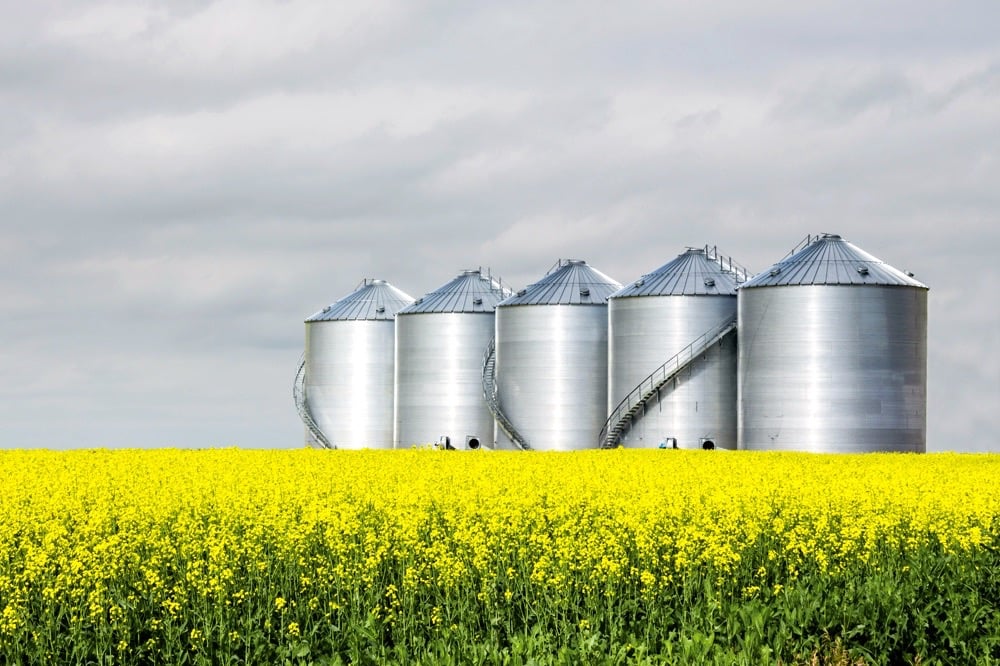Chinese tariffs not expected to stop canola flow

Glacier FarmMedia—China’s shot across Canada’s bow is splashing alarmingly close to U.S. farmers, who also felt the impact of China’s announced anti-dumping investigation into Canadian canola as American elevator prices reflected the selloff.
“We’re in the same boat,” said Barry Coleman, executive director of the Northern Canola Growers Association.
“It’s not a situation where the Canadian grower is getting less than the U.S. grower. They’re both affected the same.”
Canadian canola futures on the ICE exchange tanked when news broke Sept. 3 that China was launching an anti-dumping investigation into Canadian canola. Prices were quickly limit-down, although the November contract stabilized above $570 after falling from $620.
Read Also


Canadian canola ending stocks largest since 2020
Canadian canola ending stocks for 2023/24 were up significantly from the carryout the previous year, while revisions to the year-ago data saw wheat stocks tighten, according to the latest data from Statistics Canada released Sept. 9.
At midday Monday, the ICE Futures canola market was posting solid gains as speculators covered short positions and end-users hunted for bargains.
Despite the United States not being targeted in China’s investigation, U.S. elevator prices instantly reflected the futures selloff. When it comes to canola, whatever affected Canadian values affects U.S. values, and vice versa.
“It was the exact same thing. Prices were down the same,” said Coleman.
It’s part of the reality of canola seed, canola oil and canola meal that, like most bulk commodities, individual markets can be interrupted, but global supply and demand is flexible and fluid. If one source of either is blocked, the commodity tends to flow to the next easiest place.
“People need to remember this has happened in the past,” said Jeff Nielsen, a central Alberta farmer with much experience watching international market disruptions from inside farm organizations such as Grain Growers of Canada and the Alberta Barley Commission.
Many farmers remember the dispute with China following the arrest of Huawei executive Meng Wanzhou in late 2018. Within months both Viterra and Richardson were blocked from selling to China, severely reducing Canada’s sales to China for years. The Canola Council of Canada estimates that market access loss cost Canada’s canola industry $1.54 to $2.35 billion.
However, Canadian canola flowed to other markets, so after being discounted during the dispute, Canadian canola flowed back to China at market prices soon after the dispute was resolved.
Nielsen said numerous other countries have these sorts of issues. Canada lost most of the Saudi Arabian barley market in 2018 after the Canadian government criticized the Saudi government’s treatment of political dissidents. Australia lost Chinese barley sales after offending the Chinese government. Barley flow simply shifted.
As LeftField Commodity Research noted in a report, “it’s no coincidence that Canadian barley exports jumped during this period as it overlapped with China’s excessive tariff rate on Australian barley.”
Australia’s barley exports fell to zero, but “overall Australia’s exports didn’t suffer and movement picked up to other destinations, such as Saudi Arabia, Japan, Vietnam and Thailand. Following the tariff enactment, China began swiftly scooping up Canadian barley to fill the gap.”
The Australia-China dispute was resolved in August 2023 and Australia’s exports resumed, pushing Canada back to its traditional share of the market.
Other markets get blocked for various reasons. India is infamous for import restrictions when its government feels domestic prices are too low, leaving many Canadian pulse crops suddenly seeking new homes.
The precise impact of a foreign border blockage on western Canadian prices is impossible to gauge, said broker David Derwin of Ventum Financial in Winnipeg.
“How do you figure that out when there’s 14 other factors?” said Derwin.
“It’s not just a canola story.”
For instance, he said, the China news might have seemed to knock down canola by seven per cent, which is a lot. However, that same day most other associated commodities, such as soybean oil and crude oil, fell about four per cent. A net three per cent drop on the news isn’t gigantic.
China has also previously restricted Canadian canola sales, only allowing southern ports to be used for a few years due to what the government said was a concern about spreading Canadian blackleg strains to the country’s canola-growing regions in the north.
Sometimes Canadian canola has ended up in China despite the restrictions, flowing along meandering routes of transhipment through the Persian Gulf and other third party provider regions. That comes at a discount to Canadian canola because the extra transportation takes away some of the farmgate price. However, like most commodities, where there is demand, supply will find a way.
Nielsen said he thinks Canadian farmers shouldn’t panic. The canola industry is much more developed than it was in 2018. Major new crushing capacity has been built, with more coming, so not only are canola exports more segmented today, but huge North American demand for biofuel stocks has been soaring. China doesn’t have the same hammer lock on Canadian exports as it once did.
“We’ve changed a lot in the last five years,” said Nielsen.
Source: Farmtario.com

